Few things in the world of fishing are what they seem, whether it is fly shop chatter about last night’s hatch, a guide’s description of the rivers he or she works, or a brochure about the bonefish trip you’re thinking about taking. This is with good reason. Fishermen, despite a lifetime of learning that should teach them to do otherwise, carry the weight of unreasonably lofty expectations. Not a one of them is going to be captivated or sold on fishing that is typically reliable or better than you’d expect or even pretty darn good, even if all of those are improvements over what they’re accustomed to.
Fishermen want fireworks, even if they’re drawn from imagination rather than reality. And this has become sort of an accepted currency that prompts people like John Geirach to pen books entitled All Fishermen are Liars. It’s not that fishermen blindly and ignorantly accept the misrepresentations of turd polishers, we just like the way the world looks through rose-colored glasses, so we don’t mind folks that tint things that way.
I walked into breakfast at David Taylor's Reel Wilderness — a lakeshore camp in Alaska’s Bristol Bay region — as the only one in the yurt nursing a hangover. Last to the breakfast table, I was considerably more focused on my coffee than the conversation that was going on around me. Once called to attention, David held out a downturned hand in which he offered up a number of straws, one of which I was instructed to draw. There was a palpable excitement in the room, but I had yet to learn why.
The rest of the group — a swell but relatively quiet group of guys whom I offensively presumed to be insurance salesmen, accountants, orthodontists and such — was already aware of the reason for this exercise. We were to make a fifth-lake run. But, only two boats could make the trip. This meant only 4 of the 10 anglers in camp could go. I drew a straw. It was long. I was in.

A fifth lake run had been spoken of throughout the week as a slight possibility, one that was unlikely to materialize. It was repeatedly held out as something to covet, a thing of lore that only a few groups per season get the privilege of experiencing.
More Like This
A long, jet boat run through three of Wood Tikchik National Park’s lower system of five lakes and the comparatively short rivers that connect them, the trip was described as rough and difficult due to the windy conditions that prevail on the open lake water.
The destination, a grayling-only stream in a world of trout-choked lakes and rivers, Kulik Creek — we were told — was fished by only a handful of anglers each year. The journey required the carrying of three times the gasoline that each jet boat would normally carry for the day — two tanks for the trip up and the day of fishing, and a third that was stashed lakeside at the lower reaches of the fifth lake to fuel the trip back to camp. Almost a two hour run in each direction, the trip asked a lot of both guides and clients, and so was only feasible on the most perfect of weather days.
The creek was said to be of unparalleled beauty and the grayling in Kulik creek were said to be bigger, more stunning and even more avid dry fly eaters than the grayling that we’d been catching all week on the Agulupak. What awaited us was, we were repeatedly reminded, was a privilege not to be taken for granted.

Not sure how much building up our hosts had been doing all week and that morning regarding the possibilities of a fifth lake run, uncertain about precisely where the line between good natured showmanship and reality was being drawn, I hoped for little more than a good day while the other guests clamored about barely able to contain their excitement. Even a second year guide, who told us he had failed to make the cut for the only two fifth lake runs that had been possible the previous year, was giddy about what lay ahead. Knowing that all fishermen are liars, I kept my expectations in check.

45 minutes in, less than halfway to the mouth of Kulik Creek, the reality behind the idea that this trip wasn’t to be undertaken lightly was setting in. Even on the practically wind-less day on which we had set out, white caps predominated parts of Wood-Tikchik’s lakes and the boat ride was battering at times. Despite being long, the trip was one of staggering beauty. Even with August only days away, snow clung heavily to the peaks that rose directly from the lakes’ edges and the grandeur of the Wood Range loomed large in the distance. We watched as sockeye on their way to spawn breached the water’s surface at the mouth of virtually every tiny trickle and rivulet that flowed into the lakes.


We traversed the Wind River and Kulik Lake, the fifth and final lake in the park’s Wood River system of lakes, and arrived at the creek. Before motoring through the mouth and up-water, the guides paused the boats to ready gear. Chief amongst all was each boat’s chainsaw, which was put to work repeatedly clearing mid-river log jams and cutting the branches of fallen trees that hung over the water, blocking the way of the boats. It quickly became clear that if any other anglers had made their way up Kulik earlier that season, they certainly hadn’t done it by boat.
Eventually, the creek narrowed to the point where the jet boats became impractical and we anchored on shore, splitting our party to fish upstream and downstream of the boats. In each direction the creek meandered sharply through the Alaskan wilderness. One after another, runs of fine-graveled riffles and long, deep-pooled tailouts were punctuated by ninety-degree turns of the creek. In each riffle and pool, plainly visible grayling finned happily, rising greedily to our dry flies.

And the Kulik’s grayling were indeed much finer than their brethren in the Agulupak, Wind and Peace rivers below. Unmolested by trout and other competitors, the grayling in the Kulik’s icy cold and incredibly clean waters grow big and strong and may well be the most exceptional examples of Arctic grayling found anywhere.

The day, shortened by the lengthy trip there and long return that awaited us, was spent admiring a fish that had taken on the role of a pest (read: whitefish) in the rivers below, reveling in the remote beauty of the creek’s surroundings and soaking up an unexpected amount of sun on an unseasonably hot Alaskan summer day.
As the motor hummed on and the boat bounced merrily on the more peaceful downwind journey back to camp, I dozed and found myself wondering if, in fact, all fishermen were liars. Perhaps not all fishermen tell lies. Or, maybe in Alaska, they just don’t need to.






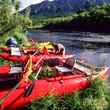
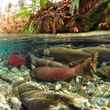




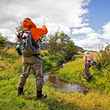



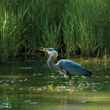
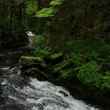


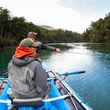
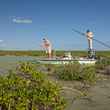



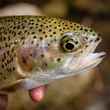


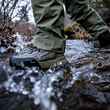

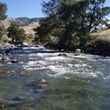
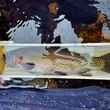
Comments